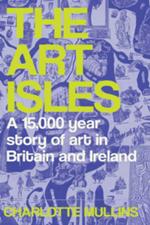At once isolated by coastal boundaries, yet also part of larger networks of diverse peoples, these islands have always benefited from a dual perspective. This is crucial to understanding why Hans Holbein the Younger and Artemisia Gentileschi worked in Britain, or why the Scottish Colourists and early Irish abstract artists were so inspired by their European neighbours. Artistic creativity in the British Isles stretches back to Ice Age engravings of reindeer, horses, and birds. International networks were already shaping prehistoric art, and by 1,000 CE artists working in Britain and Ireland were using lapis lazuli from Afghanistan, walrus tusks from Greenland, garnets from India, and elephant ivory from Africa. The Romans, Anglo-Saxons, Vikings, and Normans introduced new styles from overseas, as did later European artists, attracted by the wealth of royal courts. Art was traded and looted across the British empire by colonial explorers, merchants, and the military. In the course of the twentieth century these islands have been a refuge, but also a place where migrants have faced persecution. Sculptures by Jewish immigrants fleeing Nazi death camps, paintings by postwar Caribbean artists, and protest murals sparked by The Troubles in Northern Ireland all express artists’ complex relationships with the idea of home.

The art isles: a 15,000-year story of art in Britain and Ireland
ISBN: 9780300272130
Format: Hardback
Publisher: Yale University Press
Origin: US
Release Date: October, 2025
156946

